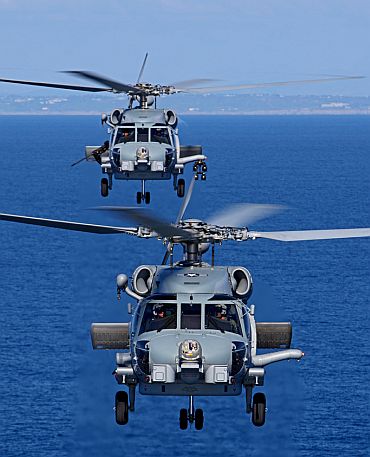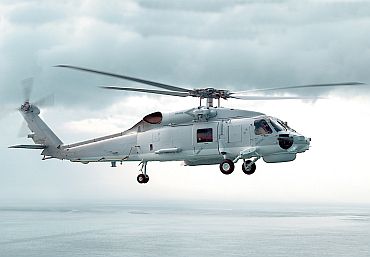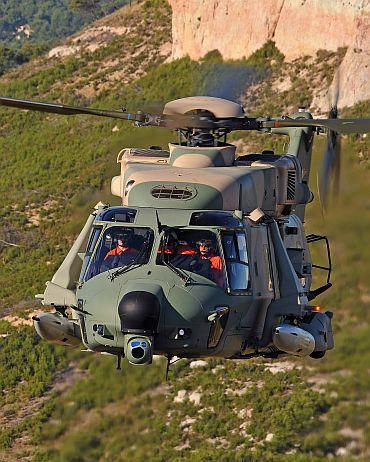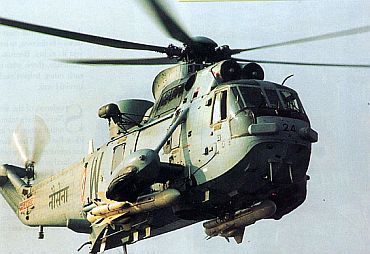India has turned down an American offer to supply 16 multi-role helicopters (MRH) through the Foreign Military Sales (FMS) route for its Navy and decided to go for open competitive bidding for the multi-billion dollar deal.
The US Navy had offered the MH-60 'Romeo' to meet Navy's requirement for 16 MRH through an inter-governmental agreement but the proposal was rejected, Defence Ministry sources said.
Under the FMS route, the procurement is done through inter-governmental agreements where the product is offered directly by the US government without any global tender being issued.
...
American S-70 Bravo or European NH-90?
Image: Sikorsky S-70 Bravo helicopterPhotographs: Courtesy Sikorsky
Following the Indian government's decision, only two contenders American S-70 Bravo and European NH-90 remain in the fray to take part in the field evaluation trials, the sources said.
The trials are expected to start after March this year.
The tender was issued over two years ago in September 2008 and the two firms responded to the bids while the US Navy had offered its Romeo through the FMS route.
Why Navy urgently needs multi-role helicopters?
Image: Eurocopter NH 90 is a twin engine, tactical transport and multi-role naval helicopterPhotographs: Courtesy Eurocopter
The Navy urgently requires the MRH to replace its aging SeaKing fleet inducted in 1970. It had 40-odd SeaKing choppers in its air wing, but the strength has come down to about 30 helicopters due to mishaps.
The MRH's primary role would be anti-submarine warfare and anti-surface warfare, while its secondary role would include search and rescue, cargo carrying and casualty evacuation.
The RFP for the 16 MRH was initially issued in early 2006, but the tenders were cancelled two years later and reissued in September 2008.
What the Navy's bidding process entails
Image: File photo of the Indian Navy's SeaKing helicopterAs per the tender, the winning bidder would be required to supply the first MRH within 46 months in three phases.
The Navy will also have the option of placing orders for another 44 helicopters, once the present contract is completed.
The contract also mandates fulfillment of the offset obligations by the winning bidder, which requires it to reinvest 30 per cent of the contract amount back into the Indian defence industry.





article